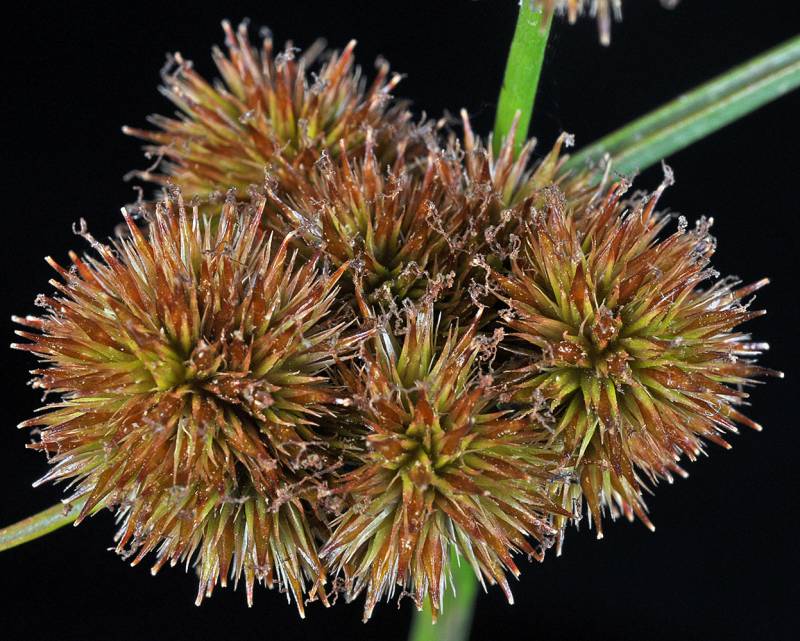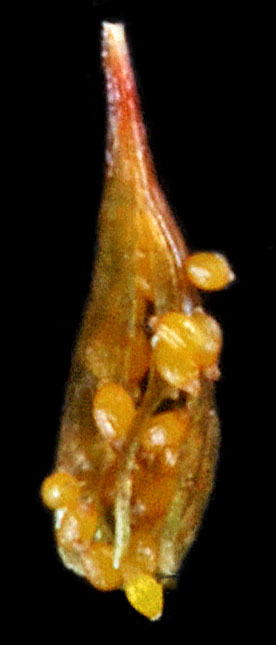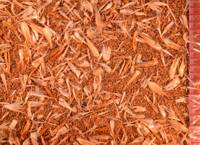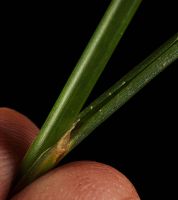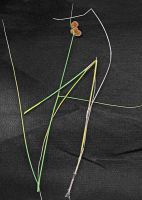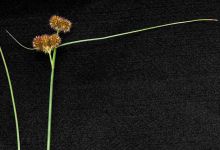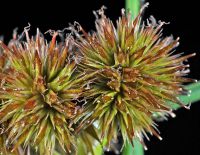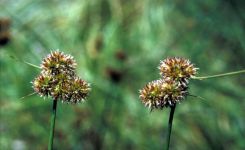Distribution: Occurring east of the Cascades crest in Washington; British Columbia to California, east across North America to the Atlantic Coast.
Habitat: Shores, swales, seeps, and ditches.
Flowers: June-August
Origin: Native
Growth Duration: Perennial
Conservation Status: Not of concern
Pollination: Wind
Perennial with slender rhizomes tuberous at the nodes, the tubers spindle-shaped, 10 mm. long and 5 mm. thick; stems 3-9 dm. tall.
Leaves alternate, 2-4, the blades terete, with prominent partitions; leaf bases sheathing, the sheaths projecting into rounded auricles 2-3.5 mm. long.
Inflorescence terminal with 3-12 many-flowered heads 10-15 mm. broad, exceeded by the uppermost and involucral bracts; perianth 4.5-5 mm. long, greenish-brown to tawny, the 6 segments narrowly lanceolate-acuminate, the inner 3 often 1 mm. shorter; stamens 6, the anthers shorter than the filaments.
Capsule narrowly conic, tapered from the base into a long beak that slightly exceeds the perianth.
Publication: Bulletin of the Torrey Botanical Club. 22:303. 1895.
Juncus nodosus L. var. megacephalus Torr.
PNW Herbaria: Specimen records of Juncus torreyi in the Consortium of Pacific Northwest Herbaria database
WA Flora Checklist: Juncus torreyi checklist entry
OregonFlora: Juncus torreyi information
E-Flora BC: Juncus torreyi atlas page
CalPhotos: Juncus torreyi photos

